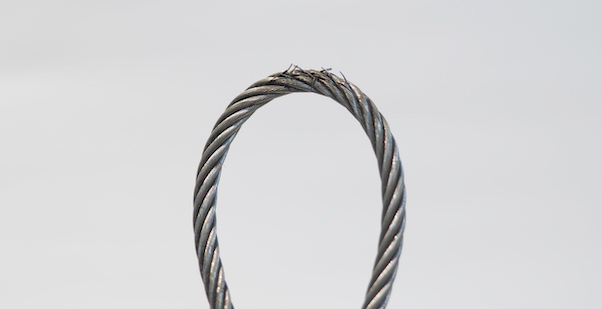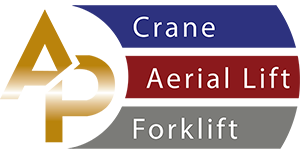Services
Aerial Lift TrainingForklift Operator Certification
Instructor Courses
Mobile Crane Operator Certification
Online Training
Crane Operator Training
Overhead Crane Training
Rigging and SignalPerson Training
All Purpose Crane Training offers crane operator training on-site or off-site. Providing National accredited crane operator certification meeting OSHA ANSI standards for crane operators to become certified.
1926.1401
1926.1402
1926.1403
1926.1404
1926.1405
1926.1406
1926.1407
1926.1408
1926.1409
1926.1410
1926.1411
1926.1412
1926.1413
1926.1414
1926.1415
1926.1416
1926.1417
1926.1418
1926.1419
1926.1420
1926.1421
1926.1422
1926.1423
1926.1424
1926.1425
1926.1426
1926.1427
1926.1428
1926.1429
1926.1430
1926.1431
1926.1432
1926.1433
1926.1434
1926.1435
1926.1436
1926.1437
1926.1438
1926.1439
1926.1440
1926.1441
1926.1442

- (a) Shift inspection.
- (1) A competent person must begin a visual inspection prior to each shift the equipment is used, which must be completed before or during that shift. The inspection must consist of observation of wire ropes (running and standing) that are likely to be in use during the shift for apparent deficiencies, including those listed in paragraph (a)(2) of this section. Untwisting (opening) of wire rope or booming down is not required as part of this inspection.
- (2) Apparent deficiencies.
- (i) Category I. Apparent deficiencies in this category include the following:
- (A) Significant distortion of the wire rope structure such as kinking, crushing, unstranding, birdcaging, signs of core failure or steel core protrusion between the outer strands.
- (B) Significant corrosion.
- (C) Electric arc damage (from a source other than power lines) or heat damage.
- (D) Improperly applied end connections.
- (E) Significantly corroded, cracked, bent, or worn end connections (such as from severe service).
- (ii) Category II. Apparent deficiencies in this category are:
- (A) Visible broken wires, as follows:
- (1) In running wire ropes: six randomly distributed. broken wires in one rope lay or three broken wires in one strand in one rope lay, where a rope lay is the length along the rope in which one strand makes a complete revolution around the rope.
- (2) In rotation resistant ropes: two randomly distributed broken wires in six rope diameters or four randomly distributed broken wires in 30 rope diameters.
- (3) In pendants or standing wire ropes: more than two broken wires in one rope lay located in rope beyond end connections and/or more than one broken wire in a rope lay located at an end connection.
- (B) A diameter reduction of more than 5% from nominal diameter.
- (iii) Category III. Apparent deficiencies in this category include the following:
- (A) In rotation resistant wire rope, core protrusion or other distortion indicating core failure.
- (B) Prior electrical contact with a power line.
- (C) A broken strand.
- (3) Critical review items. The competent person must give particular attention to all of the following:
- (i) Rotation resistant wire rope in use.
- (ii) Wire rope being used for boom hoists and luffing hoists, particularly at reverse bends.
- (iii) Wire rope at flange points, crossover points and repetitive pickup points on drums.
- (iv) Wire rope at or near terminal ends.
- (v) Wire rope in contact with saddles, equalizer sheaves or other sheaves where rope travel is limited.
- (4) Removal from service.
- (i) If a deficiency in Category l (see paragraph (a)(2)(i) of this section) is identified, an immediate determination must be made by the competent person as to whether the deficiency constitutes a safety hazard. If the deficiency is determined to constitute a safety hazard, operations involving use of the wire rope in question must be prohibited until:
- (A) The wire rope is replaced (see 1926.1417), or
- (B) If the deficiency is localized, the problem is corrected by severing the wire rope in two; the undamaged portion may continue to be used. Joining lengths of wire rope by splicing is prohibited. lf a rope is shortened under this paragraph, the employer must ensure that the drum will still have two wraps of wire when the load and/or boom is in its lowest position.
- (ii) If a deficiency in Category ll (see paragraph (a)(2)(ii) of this section) is identified, operations involving use of the wire rope in question must be prohibited until:
- (A) The employer complies with the wire rope manufacturers established criterion for removal from service or a different criterion that the wire rope manufacturer has approved in writing for that specific wire rope (see 1926.1417).
- (B) The wire rope is replaced (see 1926.1417), or
- (C) If the deficiency is localized, the problem is corrected by severing the wire rope in two; the undamaged portion may continue to be used. Joining lengths of wire rope by splicing is prohibited. lf a rope is shortened under this paragraph, the employer must ensure that the drum will still have two wraps of wire when the load and/or boom is in its lowest position.
- (iii) If a deficiency in Category III is identified, operations involving use of the wire rope in question must be prohibited until:
- (A) The wire rope is replaced (see 1926.1417), or
- (B) If the deficiency (other than power line contact) is localized, the problem is corrected by severing the wire rope in two; the undamaged portion may continue to be used. Joining lengths of wire rope by splicing is prohibited. Repair of wire rope that contacted an energized power line is also prohibited. If a rope is shortened under this paragraph, the employer must ensure that the drum will still have two wraps of wire when the load and/or boom is in its lowest position.
- (iv) Where a wire rope is required to be removed from service under this section, either the equipment (as a whole) or the hoist with that wire rope must be tagged-out, in accordance with 1926.1417(f)(1), until the wire rope is repaired or replaced.
- (b) Monthly inspection.
- (1) Each month an inspection must be conducted in accordance with paragraph (a) (shift inspection) of this section.
- (2) The inspection must include any deficiencies that the qualified person who conducts the annual inspection determines under paragraph (c)(3)(ii) of this section must be monitored.
- (3) Wire ropes on equipment must not be used until an inspection under this paragraph demonstrates that no corrective action under paragraph (a)(4) of this section is required.
- (4) The inspection must be documented according to 1926.1412(e)(3) (monthly inspection documentation).
- (c) Annual/comprehensive.
- (1) At least every 12 months, wire ropes in use on equipment must be inspected by a qualified person in accordance with paragraph (a) of this section (shift inspection).
- (2) In addition, at least every 12 months, the wire ropes in use on equipment must be inspected by a qualified person, as follows:
- (i) The inspection must be for deficiencies of the types listed in paragraph (a)(2) of this section.
- (ii) The inspection must be complete and thorough, covering the surface of the entire length of the wire ropes, with particular attention given to all of the following:
- (A) Critical review items listed in paragraph (a)(3) of this section.
- (B) Those sections that are normally hidden during shift and monthly inspections.
- (C) Wire rope subject to reverse bends.
- (D) Wire rope passing over sheaves.
- (iii) Exception: in the event an inspection under paragraph (c)(2) of this section is not feasible due to existing set-up and configuration of the equipment (such as where an assist crane is needed) or due to site conditions (such as a dense urban setting), such inspections must be conducted as soon as it becomes feasible, but no longer than an additional 6 months for running ropes and, for standing ropes, at the time of disassembly.
- (3) If a deficiency is identified, an immediate determination must be made by the qualified person as to whether the deficiency constitutes a safety hazard.
- (i) If the deficiency is determined to constitute a safety hazard, operations involving use of the wire rope in question must be prohibited until:
- (A) The wire rope is replaced (see ), or
- (B) If the deficiency is localized, the problem is corrected by severing the wire rope in two; the undamaged portion may continue to be used. Joining lengths of wire rope by splicing is prohibited. If a rope is shortened under this paragraph, the employer must ensure that the drum will still have two wraps of wire when the load and/or boom is in its lowest position.
- (ii) If the qualified person determines that, though not presently a safety hazard, the deficiency needs to be monitored, the employer must ensure that the deficiency is checked in the monthly inspections.
- (4) The inspection must be documented according to 1926.1412(f)(7) (annual/comprehensive inspection documentation).
- (d) Rope lubricants that are of the type that hinder inspection must not be used.
- (e) All documents produced under this sectionmust be available. during the applicable document retention period, to all persons who conduct inspections under this section.
